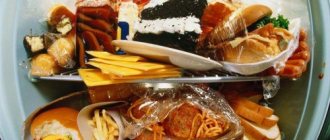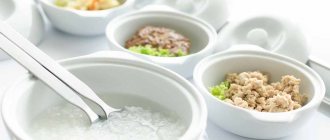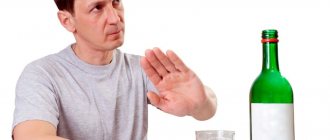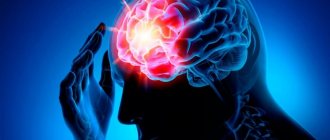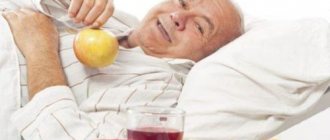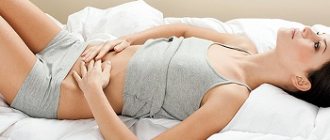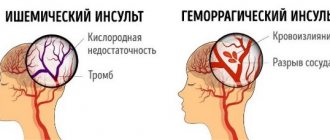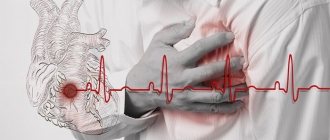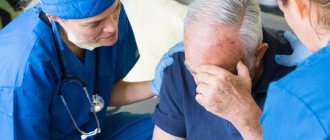There is a certain category of diseases in which the patient faces problems eating. This is due to impaired body functions. With a normal diet, you need to chew solid food thoroughly and swallow. But not all patients can do this. In such cases, doctors prescribe tube feeding - feeding the patient through a medical tube system. The patient receives a balanced diet, the menu is calculated based on the general condition of the body and the diagnosis. While taking food, the patient does not make chewing or swallowing movements. With this feeding, food enters the gastrointestinal tract in a state suitable for digestion.
Indications for tube feeding
Tube feeding is a way to provide nutrition to a patient with impaired functional state of the body. With the help of the system, the patient receives an amount of food sufficient for the normal functioning of other systems and organs. For some diagnoses, tube feeding for bedridden patients is the only method of maintaining vital functions.
Indications for the purpose of probe installation:
- rehabilitation after a stroke. One of the consequences of a stroke is impaired swallowing function (partial or complete);
- head and neck injuries with swelling of the larynx and esophagus. Ordinary food, even thoroughly chewed, does not pass down the swollen throat. Tube feeding becomes the only method of obtaining nutrients;
- being in a coma, unconscious. Patients in these conditions need to receive nutrition to maintain the vital functions of all systems and organs;
- mental disorders leading to food refusal. One example is a severe form of anorexia;
- Alzheimer's disease, multiple sclerosis, Parkinson's disease. One of the manifestations of such conditions is patient refusal to eat or impaired swallowing function;
- surgical operations on the larynx and esophagus. During the rehabilitation period after such operations, nutrition in the usual way is excluded.
In some cases, a tube system is installed in bedridden patients to administer medications taken orally. Doctors resort to this method of treatment when diagnosing gastric decompression.
Replacing or removing a nasogastric tube
The probe can be removed from the stomach by the patient himself unconsciously, especially in a depressed state of mind.
If you suspect that the tube has been removed from the stomach, slightly pull the syringe plunger towards you
The appearance of a greenish or greenish-yellow color in the tube is an indicator that the tube is in the stomach. Carefully push the probe to the previously indicated mark
If there is no content, carefully push the probe forward and pull the syringe plunger towards you again. If you do not receive stomach contents or are unsure about the correct placement of the tube, contact your clinic.
If you are unsure whether the probe is installed correctly, call a doctor or local nurse to your home
Features of tube feeding
Prescribing tube feeding requires compliance with certain rules:
- compliance with temperature conditions. Food introduced through the tube should be warm (38-39 degrees). Hot foods can cause burns to the larynx and esophagus. Cold food is difficult to digest, which will lead to a worsening of the condition;
- compliance with food consistency requirements. It must be liquid;
- compliance with the principle of gradualism. When prescribing feeding through a tube, the first meals (2-3 times) should not exceed 100 mg in volume;
- If food is prepared at home, each dish must be prepared separately.
The menu for feeding through a tube depends on the specific diagnosis. The feeding regimen and meals suitable for the patient are prescribed by the attending physician. Most often it is recommended for tube feeding of bedridden patients:
- broths based on boiled fish, meat, poultry;
- kefir;
- liquid milk porridge from semolina;
- boiled fish, meat, poultry, pureed through a fine sieve, with the addition of broth in which the products were cooked.
In addition to regular products, the doctor may prescribe vitamin mixtures and other formulations produced in industrial conditions and intended for feeding through a tube.
What is tube feeding?
Tube feeding is used when the gastrointestinal tract is functioning, when the functions of chewing and swallowing are impaired, i.e., normal oral nutrition is impossible.
A thin hollow tube (probe) is inserted through the nose into the stomach or intestines, through which nutrients will be delivered.
The probe can only be inserted by a medical professional. Tube feeding guarantees safety: the risk of choking if swallowed is minimized.
There are various compositions of mixtures for therapeutic nutrition. Due to their taste, they can be used not only as tube feeding, they can also be consumed as regular oral nutrition.
- Fiber- type mixtures with dietary fiber normalize and maintain the natural state of intestinal microflora.
- Energy type mixtures - for patients with high protein and energy needs.
- Mixtures such as Energy Fiber - for patients with high protein and energy needs, have a beneficial effect on the functioning of the gastrointestinal tract.
- Mixtures like Diabet Liquid are a special composition for patients with diabetes.
How does tube feeding work?
The daily tube feeding regimen includes 3 to 5 meals. A sterile syringe is used for each feeding. Reuse of the syringe is not allowed.
Tube feeding is done as follows:
- the bedridden patient is raised to a semi-sitting position;
- the end of the probe with the funnel, located outside, is lowered below the neck, clamped with the included clamp;
- A syringe with a nutrient mixture is attached to the funnel. The funnel with the syringe rises 50 centimeters above the level of the stomach. The clamp is removed;
- The mixture is slowly squeezed out of the syringe into the funnel. The rate of food administration is no more than 150 mg per 5 minutes;
- After introducing food, another syringe filled with water is attached to the probe. The amount of water is from 30 to 50 ml. Water flushes the system, freeing the tube from food debris;
- A clamp is attached to the probe, the end of the probe is lowered down. A plug is installed on it.
One probe system can be used for up to 3 weeks. After this, it is removed, and doctors install a new system.
Why is therapeutic nutrition better than regular nutrition?
A special diet is required to feed stroke patients. Food should be easily digestible, but also contain the nutrients the body needs. In this case, due to impaired swallowing function, food should be pureed or ground until smooth.
At each meal, food should be the same consistency and optimal temperature.
In addition to proteins, fats and carbohydrates, a serving should contain vitamins and microelements. It is almost impossible to provide the required amount of vitamins and microelements in regular food, so they need to be purchased at the pharmacy and added to food.
It is also important to remember about the rapid infection of warm pureed food: a mixture prepared independently is very quickly subject to colonization by bacteria. For a healthy person, they are usually not dangerous, but for a weakened body recovering from a stroke, they can cause harm. Therefore, you cannot prepare a lot of food at once for several days in advance. You need to constantly prepare a fresh portion.
Liquid mixtures for therapeutic nutrition meet all requirements. They are created in accordance with modern scientific recommendations, taking into account the needs of different categories of patients. Mixtures for therapeutic nutrition are available in liquid, ready-to-use form and are easily dosed, which is an additional advantage compared to traditional food. They contain high-quality proteins, fats, carbohydrates, and the optimal amount of all necessary vitamins and microelements. This allows them to be used as an additional or sole source of nutrition in patients with strokes.
Both the patient himself and his relatives can be sure that the use of this type of nutrition will allow them to quickly cope with the disease.
Dr. BOSTI recommends nutritional therapy Nutricomp from BBraun
Why BBraun?
BBraun offers a complete supply of clinical nutrition technology, including a wide range of Nutricomp enteral nutrition and parenteral nutrition products, infusion technology and delivery systems for the administration of enteral and parenteral nutrition, medical devices for central and peripheral venous access and tubes for the administration of enteral nutrition, care products for vascular access and stomas, information and technical support (including equipment maintenance), information materials for patients.
Benefits of rehabilitation
Feeding through a tube is a complex procedure, during which you must strictly follow the rules, monitor sterility and hygiene. It is very difficult for an ordinary person to do everything correctly. Our rehabilitation center employs experienced professionals who are well acquainted with the features of tube feeding. Health workers will monitor the feeding schedule and follow all doctor’s recommendations regarding the menu and amount of food.
Caring for a bedridden patient is a task with which relatives of patients often turn to us. Our employees pay special attention to compliance with all medical recommendations. In addition to nutrition, our responsibilities include:
- 24-hour care;
- prevention, treatment of bedsores;
- physiotherapy;
- massage.
The center has its own psychologists and speech therapists. These doctors help patients of all ages undergoing rehabilitation.
Supplemental oral nutrition
Supplemental oral nutrition (supplementary feeding) is used to provide additional nutrients and energy to the body. The patient independently consumes the mixture in small sips. This method increases absorption and improves tolerance of therapeutic nutrition.
Benefits of a supplemental oral nutrition drink
This is a specialized high-calorie liquid mixture that is completely balanced in all nutrients.
- The composition is optimal in terms of content and ratio of proteins, fats and carbohydrates
- Contains daily requirement of vitamins and microelements
- Contains omega-3 fatty acids from fish oil, essential fatty acids
- Blends containing and not containing dietary fiber
- Small volume - after a stroke, eating small portions is recommended
- Sterility - in patients with reduced immunity will help prevent the development of nutrition-related infectious complications
- Pleasant taste and good tolerance
Calorie sufficiency
To prevent weight gain, the diet should contain fewer calories than the diet of a physically active person. Low-calorie foods include fresh fruits and vegetables, whole grain cereals (boiled and liquid), lean meats, and low-fat or low-fat dairy products. Moreover, they should be the basis of any person’s diet according to WHO recommendations. Eating adequate calories reduces the risk of developing overweight or obesity, two factors that can lead to heart disease, hypertension and/or high blood sugar. However, many bedridden patients have poor appetite - in such cases, on the contrary, it is difficult to achieve the norm of calorie intake.
Not Recommended Products
We've figured out what bedridden patients can eat. What products are not recommended to be included in the menu? These are sausages, smoked meats, instant products, store-bought ketchups and sauces, chips, crackers, etc.
Food should not contain trans fats, which impair immunity, increase cholesterol and generally have a negative effect on health. In products, trans fats are designated as vegetable hydrogenated fats. They are found, for example, in fast food, margarine, baked goods with margarine, and spreads.
It should also be taken into account that for certain diseases there are restrictions on the consumption of even the “right” foods (for example, sour juices are not allowed for acute ulcers).
Installation procedure
Manipulations can be carried out in a hospital setting or at home, but they should only be performed by a specialist. It is advisable that the patient is conscious at the same time, otherwise the probe tube may get into the respiratory tract. To prevent this, the patient makes a swallowing movement during passage. If this is not possible, the doctor guides the device into the patient's throat with two fingers.
Proper nutrition after a stroke
One of the main causes of stroke is atherosclerosis. We develop this insidious disease gradually over many years. Young people do not take the threat of stroke seriously. Age-related problems seem too distant and insignificant. A healthy and strong body forgives us a lot. Sleepless nights, alcohol, an abundance of fatty and sweet foods are given to us without any consequences. Over the years, people acquire bad habits and cannot imagine life without coffee and sweets. Against the backdrop of adrenaline stress, there is a feeling that all these “harmful things” are part of modern life, and in general, why pick on nutrition if “living in general is harmful.”
You have to pay for the mistakes of youth in adulthood. Most of us experience the first signs of a stroke after the age of 40. At an appointment with a cardiologist and neurologist, people for the first time realize what a threat hangs over them and their families. You can't go back to the past, but you can start correcting the situation right now. With age, health goes away, but wisdom, patience and endless love for life come.
Vitamins and minerals
Patients who consume insufficient amounts of food may experience a deficiency of vitamins, macro- and microelements, which is fraught with negative health consequences. For example, low hemoglobin levels (due to iron deficiency) are associated with the development of bedsores and slower wound healing due to decreased oxygen content in the tissues. Zinc deficiency also impairs healing by reducing the rate of protein synthesis and wound epithelialization. Therefore, vitamin and mineral supplements can be included in the diet of patients (after consultation with a doctor). Overconsumption of any one mineral or vitamin should be avoided as it may interfere with the absorption of other substances and cause side effects.
Sample menu for the day
For an approximate daily menu for bedridden patients, see the table below.
| Eating | Main course | Dessert | Drink |
| Breakfast | Liquid porridge (oatmeal, buckwheat, millet) with nuts and berries | Mashed banana | Compote |
| Lunch | Mashed low-fat cottage cheese with dried fruits | Freshly squeezed carrot juice | |
| Dinner | Vegetarian soup, cabbage rolls or steamed cutlets | Fruit or milk jelly | |
| Afternoon snack | Vegetable salad with olive/linseed oil | ||
| Dinner | Mashed or boiled porridge with butter | Casserole (can be cooked in the oven or steamed), baked apple | |
| Two hours before bedtime | Low-fat kefir |

